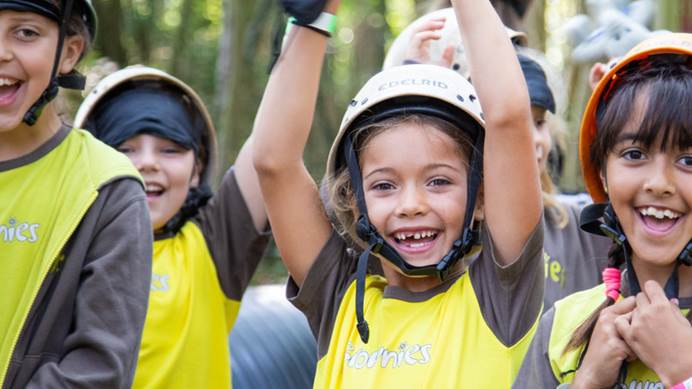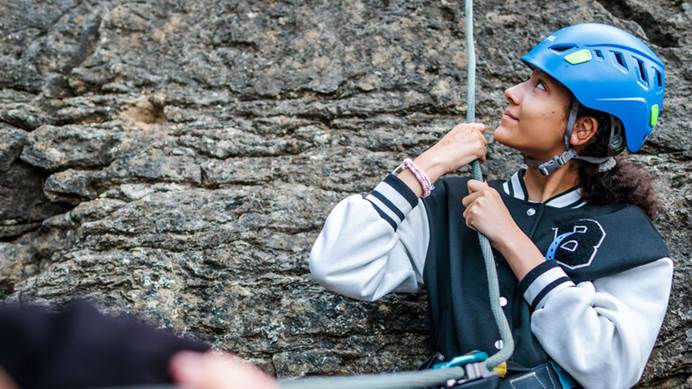How to pack like a pro
Seasoned travellers share their tips, tricks and kit-lists for outdoor adventures
We asked seasoned travellers and outdoor experts to share their packing know-how with us. So whether you're going on a half-day hike or camping in the wilderness for a week, use these tried and tested tips to make packing a breeze.
We've also put together a handy packing checklist for you to print and share with your girls - so they know what they need to bring too.
The essentials
Helen Price, Girlguiding's Region Outdoor Activities Adviser, takes us through the essentials in her kitlist. And leaders offer their tips too.
1. Carrying
To make packing easier, opt for a rucksack that opens all the way around. Also look for one with a small daypack attached, so you can carry only what you need for excursions.
2. Sleeping
A three-season sleeping bag can be used from early spring to late autumn, or even on mild winter nights (but isn’t suited to freezing temperatures). A bright inner colour will help you get into it in the dark. Take along a light, easy-to-use self-inflating sleeping mat and inflatable travel pillow.
I always have my camp blanket, it’s a great map of all my guiding stories and leaders love to compare their badges! - Rebecca, Brownie leader
3. Cooking
Long matches are best for lighting fires. If necessary, pack a can opener – but try
to buy ring-pull tins if you’re bringing them at all. You can eat pretty much anything with just a bowl and spoon, or a spork! Don’t forget an enamel cup and a small pan, which can also be used to boil water.
4. Washing
Take only the essentials: a toothbrush and small bottles filled with toiletries. Bring along a travel towel if you’re going to be showering, or wet wipes if not.
Dry bags! I have lots in different sizes and then pack each kind of clothing in different colour bags - e.g. t-shirts in yellow, trouser in blue. Makes things easier to find when you are rummaging around your rucksack. - Martha, Leader in training and Senior Section member at 1st Grange Park Rangers
5. Clothing
What you’ll need depends on how long you’re off for, and in what kind of conditions, but
a woolly hat is always useful and provides extra warmth for sleeping. Opt for a fleece
instead of a hoodie – it’s warmer, lighter and dries out faster. Good waterproofs are worth investing in, as a decent set will keep you dry and last for years to come.
To keep your pack light, sleep in a T-shirt and pants or cotton pjs. Most important of all is a good pair of walking boots. Don’t borrow someone else’s unless you really have to, and always try them on beforehand.
Fluffy socks for bed- I always bring more layers for bed than I think I need. I learnt the hard way after a cold night in an Icelandic ridge tent as a Guide. - Martha, Leader in training and Senior Section member at 1st Grange Park Rangers
Extras for outdoor expeditions
Once you've covered the basics, think about what else you might need for any hikes, activities or daytrips. Sarah Webber, our Project Co-ordinator for Outdoor and Adventure, shares the extra bits she always packs when setting off on an outdoor expedition.
- Blister plasters- essential for any trip, especially if it includes a lot of walking. Blisters are painful and uncomfortable and so having some handy supplies to deal with them is always recommended.
- A reusable water bottle to keep you hydrated.
- Have a change of clothing for all weather conditions and always pack a raincoat (no matter if it's sunny outside!).
- An additional battery charger for my phone.
- Snacks – jaffa cakes and jelly babies!
- Comfortable shoes that are appropriate for the place you are going too.
- Money – always good to have an emergency supply.
- In Case of Emergency (ICE) contacts - on phone or written down.
- Local maps.
I always take a head torch, even indoors!- Rebecca, Brownie leader
And finally...the three rules of great packing
- Dryness is golden - A wet pack is heavier, and soggy clothes will put a dampener on your trip. Veryfew rucksacks are 100% waterproof, so try to put everything inside a rucksack liner or sturdy bin bag for extra protection. If possible, avoid tying things to your pack, as they’ll be exposed to the elements.
- Pack from the bottom up - Put the things you’ll need least or last at the bottom, like your sleeping bag or spare items. At the top of the bag should be some waterproof clothing, ready to throw on, and your water bottle.
- Give it a test run - Once it’s packed, try your rucksack on and walk around your home. If it’s too heavy, you can pare it down to the basics straight away – your back will thank you for it!



